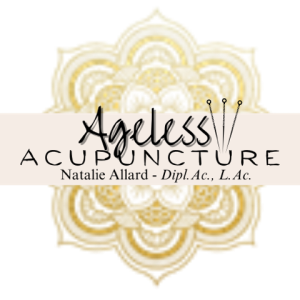Premenstrual Syndrome (PMS) is often viewed as a “problem” or illness. It’s not. Instead, PMS is a variety of responses to an ordinary event in women’s lives: menstruation. PMS usually occurs monthly, accompanied with specific symptoms and signs that can appear seven to ten days before menstruation and then disappear after the onset of the menstrual flow. To better understand PMS, it is important to look at the whole picture.
Although PMS is due to unbalanced hormonal fluctuations, other factors such as stress, a nutritionally inadequate diet, lack of exercise and sleep, and a hectic or sedentary lifestyle can exacerbate the symptoms. Because most women exhibit as many as four to ten symptoms one to two weeks prior to menstruation, their lives—from relationships with family and friends, to work productivity and the ability to appreciate and take pleasure in their own bodies—may become diminished.
To make matters worse, women may be at increased risk for PMS if
- They are over 30 years old
- They are experiencing significant amounts of stress
- Their nutritional habits are poor
- They have suffered side effects from birth control pills
- They have difficulty maintaining a stable weight
- They do not get enough exercise
- They’ve had a pregnancy complicated by toxemia
- They have had children (the more children, the more severe the symptoms)
- They have a family history of depression
What to do about PMS
In treating PMS, Western medicine recommends diet and lifestyle changes coupled with medications that manipulate the levels of progesterone and estrogen (i.e. birth control pills), tranquilizers and/or antidepressants (for nervousness, anxiety and depression) that affect mood and emotions. Although prescription medications can sometimes bring immediate relief, they unfortunately do not address the underlying cause of PMS, and they can cause unwanted side effects that may mimic PMS symptoms.
A natural approach
In 1997, the National Institute of Health (NIH)1 issued a consensus report that suggested acupuncture is effective in the treatment of menstrual cramps, and other symptoms associated with PMS. Acupuncture can address PMS symptoms naturally, without medication, by restoring balance and harmony, both physically and emotionally. In Chinese medicine, the root cause of PMS is usually an imbalance or blockage of Qi, (pronounced “chee”) or vital energy, and blood within specific organ and meridian systems. When Qi and blood become imbalanced or blocked, symptoms and signs associated with PMS will appear.
The role of an acupuncturist is to investigate the underlying causes leading to PMS symptoms. After a thorough diagnostic evaluation to determine what organ and meridian systems are out of balance, they treat PMS symptoms according to each individual patient’s imbalances and concerns.
By inserting fine, sterile needles into specific points on the body, an acupuncturist is able to stimulate and activate the movement of Qi and blood. When Qi and blood begin to travel freely throughout the body, balance and normal function are restored and PMS symptoms are alleviated. Acupuncture restores hormonal balance and provides deep relaxation to help reduce stress, ultimately encouraging and supporting greater health and well-being of both body and mind.
A practitioner may also recommend lifestyle changes such as eating a nourishing, organic, whole foods diet, getting regular aerobic exercise and adequate sleep, enjoying warm baths, supplementing the diet with vitamins and herbs, and practicing deep relaxation exercises such as meditation, breathing exercises, or yoga.
Whether you suffer from PMS symptoms on an occasional or a monthly basis, acupuncture and Chinese medicine can offer a safe, natural and effective approach to alleviating these symptoms. Acupuncture and Chinese medicine may hold the key to a healthier, balanced, PMS-free life.
Resources:
1 National Institutes of Health (NIH) – National Institutes of Health Consensus Conference on Acupuncture, Program & Abstracts (Bethesda, MD, November 3-5, 1997). Office of Alternative Medicine and Office of Medical Applications of Research. Bethesda.



